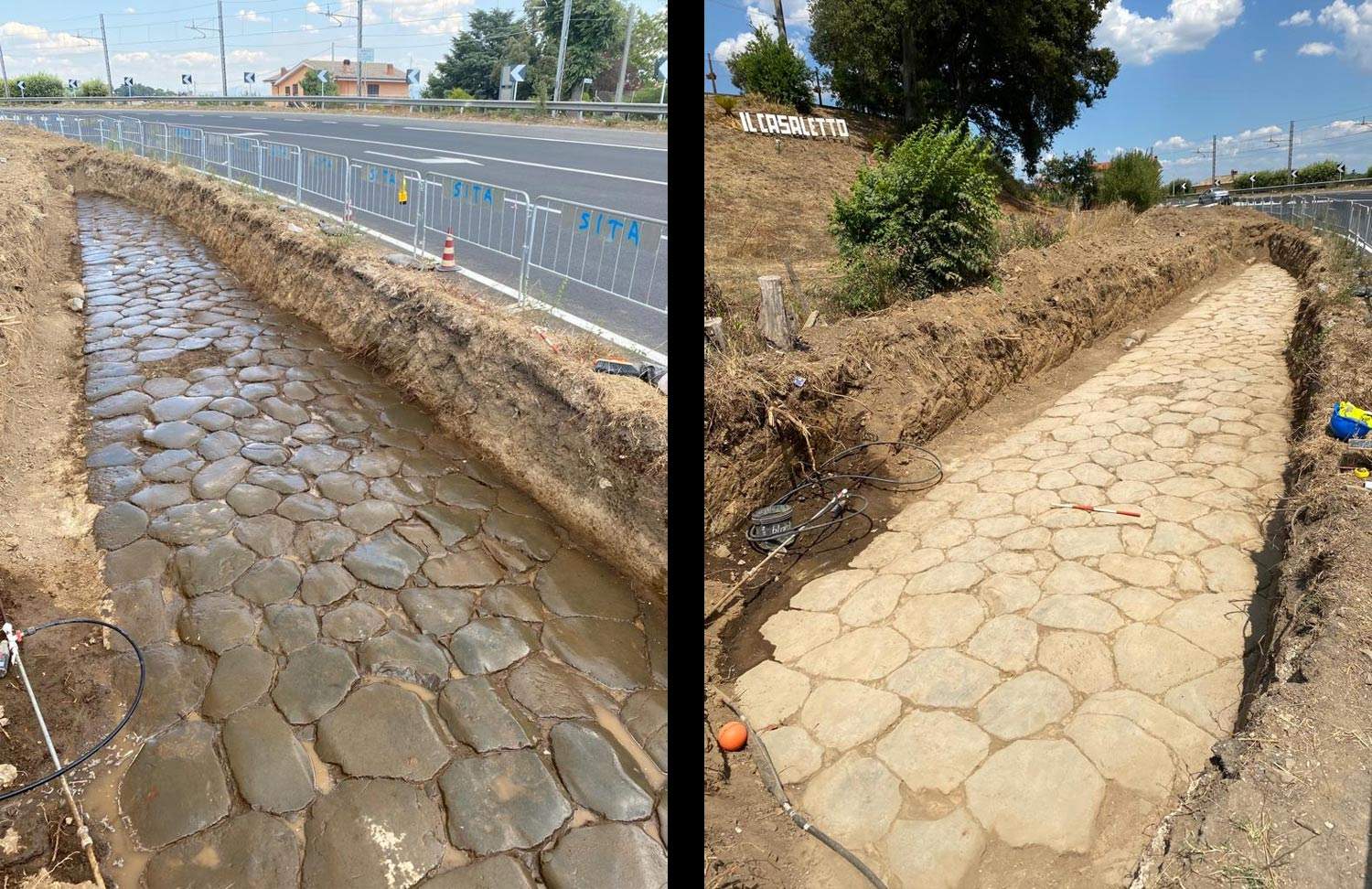Riano (Rome), two sections of the ancient Via Flaminia resurface.
Two sections of the ancient Via Flaminia, a consular road built by censor Gaius Flaminius to connect Rome with central and northern Italy and built in just two years between 220 and 219 B.C., have been brought to light in Riano (Rome) as part of an archaeological excavation aimed at laying a new water pipeline. The work was carried out by Acea Ato2 S.p.A. with construction director Marco Lupi, together with the company S.I.T.A. srl with technical director Diego Piacente.
The archaeological discovery involved the western quay of the modern Via Flaminia, near the intersection with Via Stazzo Quadro. Following the discovery, archaeological investigations began immediately, which were supervised by the Archeo company of archaeologist Fabio Turchetta and under the scientific direction of the Soprintendenza Archeologia Belle Arti e Paesaggio for the Province of Viterbo and Southern Etruria, with responsible official Biancalisa Corradini.
The basalt road, identified at a depth of about -0.90 m from the current ground level, was investigated for a 27-m-long section. In this section the modern Via Flaminia follows the route of the Roman road rather precisely, except for a slight offset.
The ancient road, consisting of large polygonal basaltic stones placed with extreme care, the “basoli,” was investigated for a maximum width of 4 meters and retains only small portions of the original crepidine on the western limit. The eastern limit of the ancient basalt, however, which continues below the road surface of the modern Flaminian Way, could not be unearthed.
The surface of the paving stones reveals the presence of deep cart tracks due to the wear and tear of the stones caused by the repeated passage of ancient carts. The identified portion shows the characteristic “humpback” conformation, of fundamental importance for rainwater runoff.
In the course of the same archaeological investigations, a further section of the same ancient route was identified 90 meters further north, on the western bank of the modern road immediately behind the monument dedicated to Giacomo Matteotti; in this case, too, the Roman paving is perfectly preserved at a depth of only 0.80 m from the current walking surface of the modern Via Flaminia.
 |
| Riano (Rome), two sections of the ancient Via Flaminia resurface. |
Warning: the translation into English of the original Italian article was created using automatic tools. We undertake to review all articles, but we do not guarantee the total absence of inaccuracies in the translation due to the program. You can find the original by clicking on the ITA button. If you find any mistake,please contact us.




























